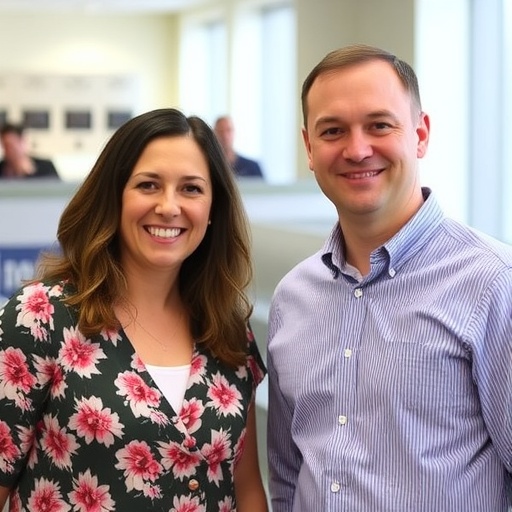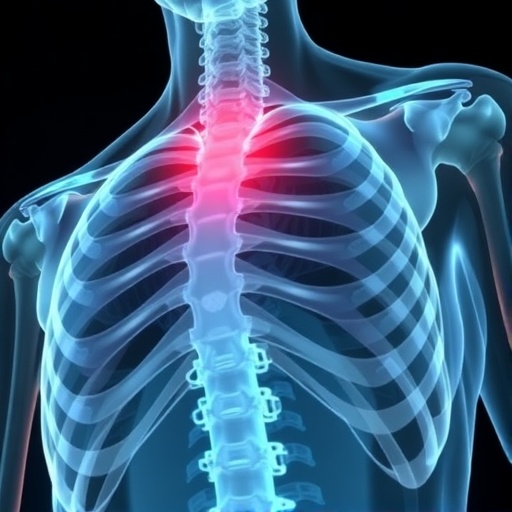Millions of women globally experience episiotomies every year during childbirth, yet the biomechanics and underlying factors associated with this surgical intervention are surprisingly under-researched. In a groundbreaking study, a multidisciplinary team from the University of California, Riverside (UCR) and Northern Arizona University (NAU) aims to fill this critical gap in women’s health, shedding much-needed light on the mechanical stresses and potential outcomes of episiotomies.
The procedure of an episiotomy, which involves incising the pelvic-floor muscles to facilitate a smoother delivery, has often relied on the subjective judgment of the attending surgeon. While the intention is to minimize the probability of severe vaginal tears or delivery complications, the reality is that this practice can sometimes lead to adverse long-term effects. These include persistent pain, incontinence, heightened risk of infection, and detrimental repercussions on sexual health.
Thanks to a generous $600,000 grant from the National Science Foundation’s Boosting Research Ideas for Transformative and Equitable Advances (BRITE) program, this novel research initiative will rigorously explore the mechanics involved in episiotomies. Led by Dr. Mona Eskandari, an assistant professor of mechanical engineering at UCR, along with computational modeling efforts spearheaded by Dr. Heidi Feigenbaum at NAU, the project pairs sophisticated experimental techniques with advanced computational simulations to produce a comprehensive understanding of the childbirth mechanics involved.
The bMECH lab led by Dr. Eskandari has long been at the forefront of pioneering techniques to tackle challenging biomechanics problems. Her past research endeavors include the development of specialized apparatuses and cutting-edge imaging technologies, providing novel insights into the properties of soft biological materials, including lung tissue. This rich tapestry of experience will undoubtedly add value to the current study and deepen the understanding of childbirth mechanics.
According to Dr. Feigenbaum, the implications of this research reach far beyond mere academic scrutiny of tearing during childbirth. Episiotomies often generate substantial stresses at the tip of the incision, creating conditions ripe for tearing that can further complicate delivery. A clearer grasp of when and how these incisions might expand could revolutionize the surgical approach, thereby enhancing the delivery experience for mothers and reducing trauma.
Currently, our comprehension of the stresses and resultant tears associated with episiotomies remains insufficient. Given the ethical limitations surrounding human cadaveric studies, the research team has opted to utilize rat models that share biomechanical features relevant to the human pelvic floor. This creative approach will allow for the acquisition of indispensable data that can inform future clinical practices and improve surgical outcomes for women.
Moreover, beyond merely aiming to inform surgeons about best practices, this study could disrupt entrenched notions within the biomechanics community. Dr. Eskandari notes that they are also scrutinizing how complex tissue behaviors—including nonlinear responses, finite strain characteristics, and viscoelastic properties—affect tearing propensity. These factors are often overlooked in conventional surgical planning, yet they could hold the key to more successful interventions.
As the research progresses, the findings will not only have clinical implications but may also challenge prevailing assumptions in the broader fields of biomechanics and obstetrics. A newfound understanding of pelvic tissue dynamics might prompt a reassessment of surgical techniques and assist in formulating guidelines that enhance maternal safety during what is often a critical life moment.
In conclusion, the unique collaboration between mechanical engineers and clinical researchers stands to illuminate a largely unexplored area of women’s health that has remained undiscovered for too long. Through rigorous experimental and modeling efforts, the insights garnered from this study may lead to promising advancements in surgical practice and have lasting positive implications for women everywhere.
In an age where women’s health issues command greater attention and advocacy, this research aligns perfectly with the movement towards ensuring safer and more effective healthcare treatments for mothers. As the women of today navigate the journey of childbirth, the fruits of this research endeavor could very well pave the way for a more informed and compassionate approach to delivering care in the future.
With ongoing commitment and funding, the interdisciplinary team at UCR and NAU can continue to investigate the complex interactions at play in childbirth mechanics, and their final output could redefine not only surgical precedents but also empower women to reclaim their narratives in the realm of maternal health.
While awareness surrounding the consequences of episiotomies grows, it is research like this that will provide the data-driven foundations necessary for evolving surgical practices. Knowledge is power, and as this study progresses, it hopes to empower practitioners and expectant mothers alike with improved foresight and understanding of what childbirth entails.
Through innovative research methodologies and a resolute focus on women’s health, Dr. Eskandari and her team stand poised to challenge the status quo, fostering a future where the intersection of technology and medicine improves experiences for all who participate in the miracle of birth.
Subject of Research: The biomechanics of episiotomies in childbirth
Article Title: Unveiling the Mechanics: A New Study on Episiotomies in Childbirth
News Publication Date: [Insert Date]
Web References: [Insert any relevant links]
References: [List any references if applicable]
Image Credits: Jonathan Alcorn/ UCR
Keywords: Episiotomy, Childbirth, Women’s Health, Biomechanics, Surgical Procedures, Maternal Safety, Mechanical Engineering, Clinical Research
Tags: episiotomy biomechanicsincontinence risks childbirthlong-term effects episiotomymechanical stresses episiotomymultidisciplinary research childbirthNational Science Foundation grant researchpelvic tissue tears childbirthpersistent pain after childbirthsurgical intervention childbirthtransformative advances women’s healthwomen’s health researchwomen’s pelvic health





